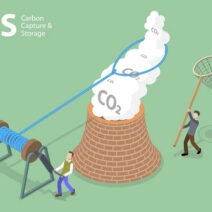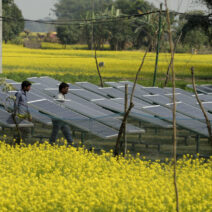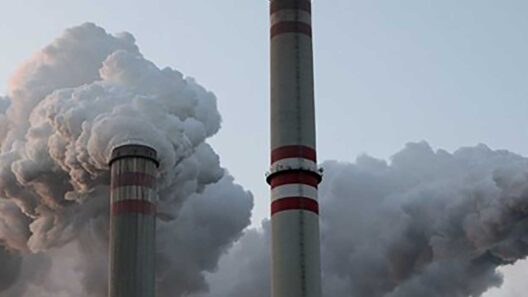The phenomenon of climate change has become a ubiquitous topic in contemporary discourse. Despite its prevalent discussion, a comprehensive understanding of the underlying mechanisms driving these dramatic alterations in our planet’s climate system remains elusive to many. This article aims to elucidate the intricate science behind climate change, unveiling the multifaceted causes and consequences that compel us to take notice of this existential threat.
At the heart of climate change lies the concept of the greenhouse effect. This natural process is essential for maintaining temperatures that support life on Earth. Solar energy reaches the planet’s surface, where a portion is absorbed, warming the land and oceans. Subsequently, this heat radiates back into the atmosphere as infrared radiation. Herein lies the crux of the greenhouse effect: certain gases, known as greenhouse gases (GHGs), trap this heat, preventing it from escaping into space. Carbon dioxide (CO2), methane (CH4), nitrous oxide (N2O), and water vapor are the primary culprits in this scenario. While the greenhouse effect is vital for sustaining life, anthropogenic (human-induced) activities have intensified this natural process to alarming degrees.
Primarily, the combustion of fossil fuels—including coal, oil, and natural gas—has introduced unprecedented levels of CO2 into the atmosphere. This phenomenon correlates directly with industrialization, which commenced in the late 18th century. As societies pivoted toward energy-dense fossil fuels to power factories, vehicles, and homes, CO2 emissions skyrocketed. The Intergovernmental Panel on Climate Change (IPCC) reports a stark reality: atmospheric CO2 concentrations now exceed 400 parts per million, a level not experienced in over 800,000 years.
Moreover, land use changes, particularly deforestation, contribute significantly to climate change. Forests act as carbon sinks, absorbing CO2 from the atmosphere. When trees are felled for agriculture, urban development, or logging, the stored carbon is released back into the atmosphere, exacerbating the greenhouse effect. Additionally, the loss of these ecosystems diminishes biodiversity and disrupts local and global climatic patterns. Therefore, both the emission of greenhouse gases through fossil fuel consumption and the deforestation of carbon sinks drive the urgent climate crisis.
While CO2 remains the most prevalent GHG, methane presents a unique challenge. This gas is substantially more effective at trapping heat compared to CO2, possessing a global warming potential that is approximately 25 times greater over a 100-year period. Methane is predominantly emitted during the extraction and transportation of fossil fuels, as well as from agricultural practices, notably livestock digestion and manure management. The rapid increase in methane levels is alarming; agricultural and industrial practices are allowing for further release of this potent gas, thus aggravating climate-related issues.
In addition to human activities, various feedback loops exacerbate climate change. As temperatures rise, ice sheets and glaciers melt, diminishing the planet’s albedo effect—the ability to reflect sunlight. This meltwater exposes darker ocean and land surfaces, which absorb more heat, leading to further warming. Similarly, the release of methane trapped in permafrost as it thaws forms another self-reinforcing cycle that accelerates climate change. These feedback mechanisms illustrate the interconnectedness of the Earth’s systems and the complexities involved in mitigating climate change.
Consequently, the repercussions of climate change are extensive and multifaceted. Extreme weather events, such as hurricanes, droughts, and wildfires, are becoming increasingly frequent and severe. This escalating volatility not only endangers ecosystems and biodiversity but also poses significant risks to human health, infrastructure, and the global economy. For instance, prolonged periods of drought can lead to crop failures, threatening food security. Rising sea levels, driven by the melting of polar ice and thermal expansion of seawater, endanger coastal communities around the world.
Furthermore, the socio-economic ramifications of climate change cannot be understated. Vulnerable populations, particularly in developing nations, bear the brunt of climate-induced challenges. Limited resources and infrastructural deficiencies often hinder their ability to adapt to changing climatic conditions. Here lies a critical and often overlooked aspect of climate change; it is not merely an environmental crisis but a profound social and ethical issue. The inequitable burden of climate change necessitates urgent global dialogue aimed at fostering climate justice.
The scientific consensus surrounding climate change is unequivocal. It is not a distant or abstract dilemma; it is occurring in real-time, as evidenced by shifting weather patterns and rising global temperatures. The complexity of climate systems, coupled with human influence, necessitates immediate and diversified action. Transitioning to renewable energy sources, such as solar, wind, and hydroelectric power, can significantly mitigate CO2 emissions. Furthermore, reforestation and sustainable land management practices are critical in enhancing carbon sequestration while preserving biodiversity.
Lastly, climate change evokes a profound fascination, acting as a compelling reminder of humanity’s intricate relationship with our planet. As we grapple with the consequences of our actions, we are also afforded the opportunity to reconfigure societal norms toward sustainability and conservation. Bridging the gap between scientific understanding and public consciousness is imperative; it fosters informed decision-making and policy development that prioritizes our shared environmental future.
In conclusion, the phenomenon of climate change is the result of both natural processes and human activities. Understanding the science behind climate change reveals a complex web of interactions that underscore the urgency of collective action. Addressing the crisis requires not only scientific endeavors but also a moral commitment to equity and justice in an increasingly changing world. The time to act is now—our planet’s future hinges upon it.




